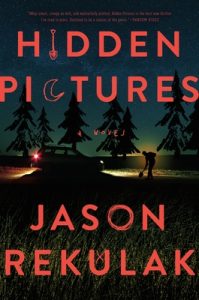
Bloom by Delilah S. Dawson begins as a gentle, honey-scented sapphic romance and ends as a full-blown nightmare. At first glance, it feels like the perfect cozy novella: farmers’ markets, pastel soaps, homemade cupcakes, and the spark of a new romance between two women who seem destined to heal each other. But under all that sweetness lies rot. What starts with charm and tenderness quickly morphs into a dark, unsettling exploration of obsession, abuse, and the devouring nature of desire.
A Love Story that Turns Carnivorous
The novella opens with Rosemary, an assistant literature professor seeking a fresh start after a bad breakup and years of emotional isolation. When she meets Ash at the local farmers’ market, she’s instantly captivated. Ash is radiant, poised, and seemingly perfect, selling candles, soaps, and baked goods with effortless grace. Rosemary is drawn to her, not just in attraction but in envy she wants to be Ash as much as she wants to be with her.
As the relationship blossoms, Dawson’s prose drips with unease. The idyllic romance begins to feel claustrophobic, and subtle hints suggest something far darker beneath Ash’s polished surface. The book’s horror grows from the familiar infatuation, self-doubt, the urge to please until it becomes monstrous. When Rosemary ignores every red flag waving in her face, readers feel that slow dread of watching someone walk willingly into danger.
The Horror Beneath the Honeysuckle
Dawson uses psychological and body horror to explore emotional abuse and codependency. What makes Bloom effective isn’t just its violence but its emotional truth. It portrays how people can be manipulated into accepting harm when they desperately want love, and how isolation and longing can make us blind to danger.
The story’s pacing is brisk and the tension builds steadily. The cozy-cottagecore aesthetic lulls readers into a false sense of safety before the narrative claws its way into cannibalism, captivity, and gore. The final chapters are shocking, grotesque, and impossible to look away from. Many readers, like Melanie from Goodreads, admitted that the ending made them audibly gasp.
Strengths and Weaknesses
The novella’s greatest triumph lies in its atmosphere and thematic depth. Dawson turns a familiar romantic setup into a haunting allegory about consuming and being consumed both emotionally and literally. The way she ties domesticity, femininity, and hunger together is unnervingly clever.
However, Bloom isn’t for everyone. Readers expecting a soft, cozy sapphic romance might feel betrayed by its descent into horror. The plot is fairly predictable, and as reviewers like Nina pointed out, the characters can feel distant Rosemary’s pretentious inner voice and Ash’s deliberate mystery make it hard to connect emotionally early on. Still, when the horror hits, it hits hard, and the ending more than compensates for the slow start.
Final Thoughts
Bloom is not your typical romance. It’s a sharp, satirical, and stomach-churning tale about love gone wrong, about wanting someone so much that you lose yourself in the process. Dawson’s writing is lyrical and unflinching, transforming a seemingly innocent love story into something feral and unforgettable.
If you’re in the mood for a quick read that starts with soft sapphic sweetness and ends with chilling horror, Bloom is a perfect choice just maybe not right before dinner.
✨ Verdict: 4 out of 5 stars
A darkly delightful novella that proves love can be as dangerous as it is beautiful.
📘 Get your copy of Bloom on Amazon here: https://amzn.to/46CWBjf


